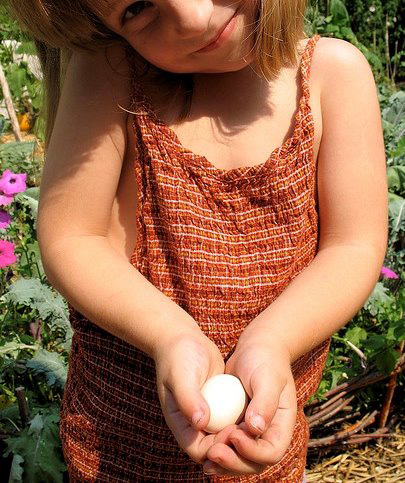
When you raise hens from baby chicks, finding their first eggs can be exciting. Chickens don’t all start laying at the same time, so you’ll likely find an occasional small egg, then maybe one each day. Before long you’ll be finding multiple eggs daily. But since most chickens don’t lay an egg every day, how can you tell which ones are doing the work?
Appearance is one way to tell that a pullet (young hen) has started to lay eggs. As a pullet reaches maturity, her small, pink comb and wattles will become larger and redder. Her juvenile molt will be complete, and her full coat of feathers will appear sleek and shiny. She will fill out to a healthy weight and reach full size for her breed. Her vent will become loose and moist, her abdomen will soften, and her pubic bones will become flexible. You should be able to place at least three fingers between the pubic bones — the two sharp, slender bones ending in front of the vent — or two fingers if she is a small breed or bantam.
Behavior is another way to tell a pullet has started, or is about to start, laying eggs. She will readily squat for an approaching rooster, or for you, if you reach down to pet her or pick her up. She will sing loudly and otherwise become quite vocal. She will spend time nestling in the nest boxes, or in other dark, cozy nooks.
Exactly when a pullet starts laying depends on a number of factors, including her bloodlines. Breeds that are bred for egg production will generally start laying earlier than breeds bred for exhibition. Other things that influence healthy egg laying include housing conditions, state of health, diet and time of year. Pullets that reach laying age in the middle of winter generally won’t start laying until the following spring, while those reaching maturity in the fall will typically lay throughout their first winter.
A pullet’s first few eggs will typically be quite small and may not even contain a yolk. As the bird’s reproductive system gears up, her eggs will gradually increase in size until she is laying eggs of normal size for her breed. Sometimes the first few eggs will have a bit of blood on the shell, as her vent gradually stretches to allow larger eggs to pass.
Early layers that are in good health may start laying as young as 14 to 16 weeks of age. Early layers include Rhode Island Red, barred Plymouth Rock and sex links such as Cinnamon Queen. Many breeds start laying at about 5 months of age. Some, however, delay laying until they are 6 months of age or even older. Late layers include black Ameraucana, buff Brahma and Jersey Giant.
And that’s today’s news from the Cackle Coop.
Gail Damerow, author, Storey’s Guide to Raising Chickens


